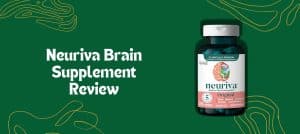
Be Healthy and Fit with E-BP expert’s reviews and suggestions.

Who We Are
We are a fitness and health blog that provides expert reviews of products, tips to help you lose weight and gain muscle, and general advice on how to get fit and stay healthy. Whether you’re a beginner or an experienced athlete, we have something for everyone. Our mission is to help people achieve their fitness goals and live healthier lives.

Latest Products Reviews
- Quinoa for Weight Loss – Effective Tips & Healthy Recipesby Dr. Cornell HellerQuinoa, a seed that’s treated and consumed like a grain, has gained immense popularity due to its nutritional benefits. Unlike many other grains, quinoa is … Read more
- How to Use Flax Seeds for Effective Weight Lossby OyaaaIn the bustling world of health and wellness, flax seeds emerge as a beacon of nutritional excellence, promising not only weight management but a spectrum … Read more
- WW Sequence Reviews – In-Depth Weight Loss Program Analysisby Dr. Cornell HellerAs the landscape of health and wellness continuously evolves, a standout program has captured the attention of many seeking a sustainable and effective approach to … Read more
- Transform Your Fitness with Prison Workouts Guideby Dr. Cornell HellerPicture this: confined to a small space with minimal resources, yet emerging stronger, both mentally and physically. No, this isn’t the latest reality TV show … Read more
- Hang Clean vs Power Clean – Perfect Your Weightlifting Techniqueby Dr. Cornell HellerWhen stepping into the world of weightlifting, it’s easy to feel like you’ve walked into a bustling gym party where everyone knows the dance moves … Read more
- Snail Mucin Safety During Pregnancy – Skincare Insightsby Dr. Cornell HellerIn the expansive cosmos of skincare, few ingredients have captivated the imagination and earned the adoration of enthusiasts and skeptics alike as snail mucin has. … Read more
- Neuriva Brain Supplement Review – Boost Your Cognitive Healthby Dr. Cornell HellerPicture this: You’re on your third cup of coffee, staring at your computer screen. The deadline is looming, and your brain feels like it’s packed … Read more
- GF 9 Supplement Review – Costs, Effects, and Real Feedbackby Dr. Cornell HellerIn an age where the quest for youthfulness and vitality seems to be at an all-time high, the market for supplements that promise anti-aging benefits, … Read more
- Linzess for Weight Loss – Real Reviews and Costsby Dr. Mckayla KubWelcome to our latest blog post, where we dive into the world of Linzess, a medication that’s been making waves not just in the digestive … Read more
Latest Posts
- Is Chobani Healthy? Benefits and Comparisonsby Dr. Mckayla KubWelcome to our deep dive into one of America’s most beloved yogurt brands—Chobani. As we navigate the complex world of healthy eating, understanding the nutritional … Read more
- Is Fiji Water Good for You – Health and Environmental Guideby Dr. Amanda O’ConnerIn our health-conscious world, the water we drink is more than just a refreshment; it’s a crucial part of our wellness journey. As bottled water … Read more
- Is Sparkling Ice Good for You? Health Insights Revealedby Dr. Amanda O’ConnerIn a world where sugary sodas reign supreme, a colorful and seemingly lighter alternative like Sparkling Ice promises a refreshing escape. With its vibrant bottles … Read more
- Sexual Health Benefits of Cranberry Juiceby Dr. Amanda O’ConnerCranberry juice isn’t just a refreshing beverage for the holidays; it’s a powerhouse of nutrients with surprising benefits, especially when it comes to sexual health. … Read more
- OMAD Diet Results After 1 Month for Womenby Dr. Amanda O’ConnerIn our fast-paced world, simplicity in our diet can sometimes spell success. The One Meal A Day (OMAD) diet, an extreme form of intermittent fasting, … Read more
- 9 Warning Signs of Mold Toxicity You Should Knowby Dr. Amanda O’ConnerMold: it’s a common household issue that many of us may overlook, but its impact on health can be serious and far-reaching. Found in damp … Read more















